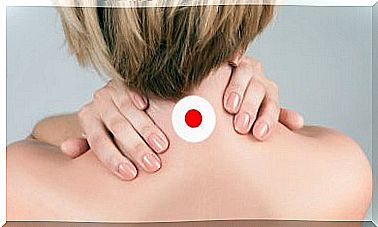Drug Interactions And Their Impact
When we talk about drug interactions, we refer to the reactions that different drugs have in the body that we take simultaneously to treat different symptoms. In other words, the action of one or more drugs administered at the same time can be modified, so that their effects can be intensified or reduced.
On the other hand, there is an increased risk of unwanted side effects and even overdose, which leads to treatment failure. The effect that a drug has on the body can be different, depending on the type of interaction:
- Between drugs: taking two or more drugs at the same time.
- Drug – nutrient: that is, the reaction of the drug with food, drink or supplements .
- Drug – disease: occurs when the patient has another disease.
Types of drug interactions
Linares Borges explains the following about drug interactions:
Duplication
When the patient is instructed to take two drugs at the same time, his reactions may intensify. Sometimes two drugs are taken without a prescription and it is unknown that they have the same active ingredient.
For example: the patient is prescribed a cold drug but also a sleeping pill. Both are prepared on the basis of diphenhydramine. In this case there is a duplication, since although they seem different they have the same composition. Hence the importance of verifying the composition of the drug.
What can happen? By ingesting high doses of the same compound there is a risk of poisoning. The same happens with two drugs with different composition but the same effect. It is essential to tell the doctor if other drugs are being taken and to keep a record.
Opposition (antagonism)
In this case, what is produced is an intake of two drugs with opposite actions. Therefore, it causes a reduction in the effectiveness of one or both of them. This is one of the drug interactions that exist and is known as antagonism. In fact, there are several types:
- Physiological: two antagonist drugs act on different receptors producing opposite effects.
- Competitive pharmacological, that is, two drugs with opposite effects act on the same receptor.
- Reversible: the antagonist can be defeated by increasing the dose of the agonist.
- Non-competitive pharmacological, that is, the antagonist drug blocks the effect of the agonist.
- Partial agonism: the drug binds to the receptor and produces a suboptimal response.
Disturbance
Medications, such as type 2 histamine receptor antagonists and proton pump inhibitors, raise the pH of the stomach to lower acids and reduce the absorption of some drugs. A good example is ketoconazole, an antifungal treatment.
A large percentage of drugs are broken down by enzymes in the liver and kidney.
However, the drugs increase or decrease the activity of the enzymes. This can cause the other drug to not be metabolized on a regular basis. In fact, tobacco use decreases the effect of some medications.
On the other hand, other drugs affect the rate of renal excretion of other drugs. For example: when the patient is given high doses of vitamin C, the urine becomes more acidic and this affects how another drug goes through the excretion stage.
For this reason, it is important that doctors and pharmacists consult books and computer programs when prescribing. Such is the case of some pharmacies that review the possible interaction of drugs through computerized programs.
Interaction between drugs and nutrients
The way we eat can stimulate, delay or decrease the absorption of drugs and in the same way alter the absorption of antibiotics. For example: tyramine is a substance found in cheese and is capable of causing a hypertensive crisis if consumed while monoamine oxidase inhibitors are present.
But what happens when there is a deficiency? The absence of calories and protein lowers enzyme concentrations and can alter the response to drugs. This is because there is a change in the digestive system and it modifies the response of the medicine. For its part, the lack of minerals changes the metabolism.
In addition, there are drugs that alter appetite, food absorption, and gastrointestinal motility. Therefore, some of them are more tolerated when ingested with food. They are explained more specifically below.
Food
When a medicine is taken by mouth, it is absorbed by the lining of the stomach or small intestine. However, if there is food in the digestive tract, the absorption of the drug may be reduced. Hence the indication to take it 1 hour before or 2 hours after meals.

Dietary supplements
The supplements are made up of vitamins, minerals, herbs, and amino acids. These supplements are not considered food as such, but they can have drug interactions; For this reason it is recommended to notify the doctor of its consumption. Knowing this, the professional will proceed to give their instructions.
Alcohol
Clearly, alcohol is not exactly a nutrient. However, it has an effect on organ processes and also interacts with many drugs. Therefore, if we drink alcohol and consume antibiotics, we will have a headache, nausea and vomiting.

Interaction between drugs and diseases
It is essential that the person indicates to the doctor all the diseases that he suffers so that he can make the prescription properly. This is so because there are drugs that can have positive effects for a certain disease but make other conditions worse. For example: in cases of heart disease, beta-blockers are indicated, which can aggravate asthma.
There are certain pathologies that are already known to be especially vulnerable to this situation. People with diabetes, ulcer, hypertension, insomnia or urinary incontinence are more likely to have this type of interaction.
Did you know about drug interactions with nutrients and diseases? Surely you had heard something, but you did not know everything behind it. For this reason, we advise you to always tell your doctor about your health and the drugs you are taking so that he or she can guide you in the best possible way.
Finally, remember that you must follow the instructions of your doctor and, in case of doubts, consult with the professional before making any changes. In this way, you will avoid adverse effects.









